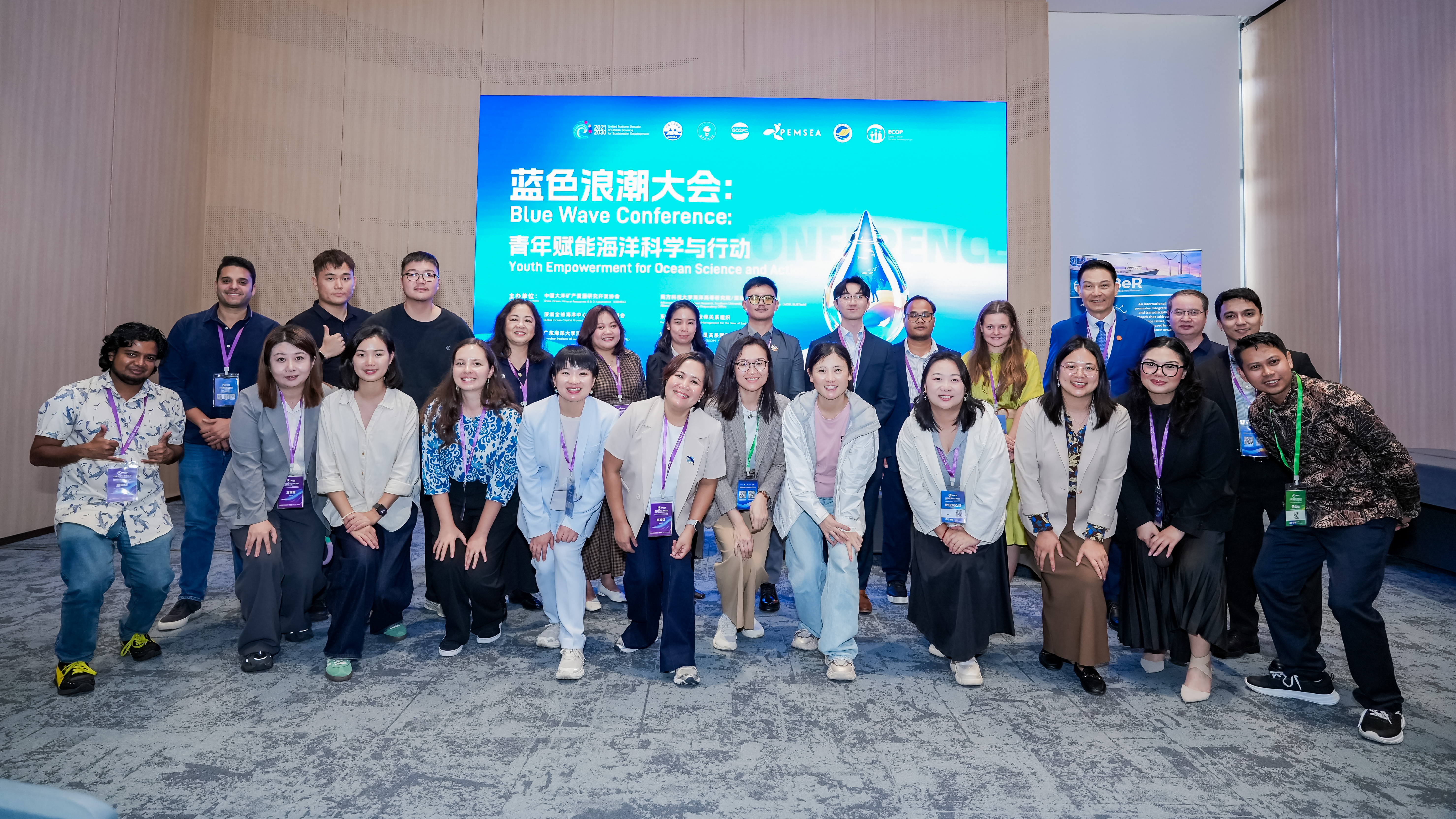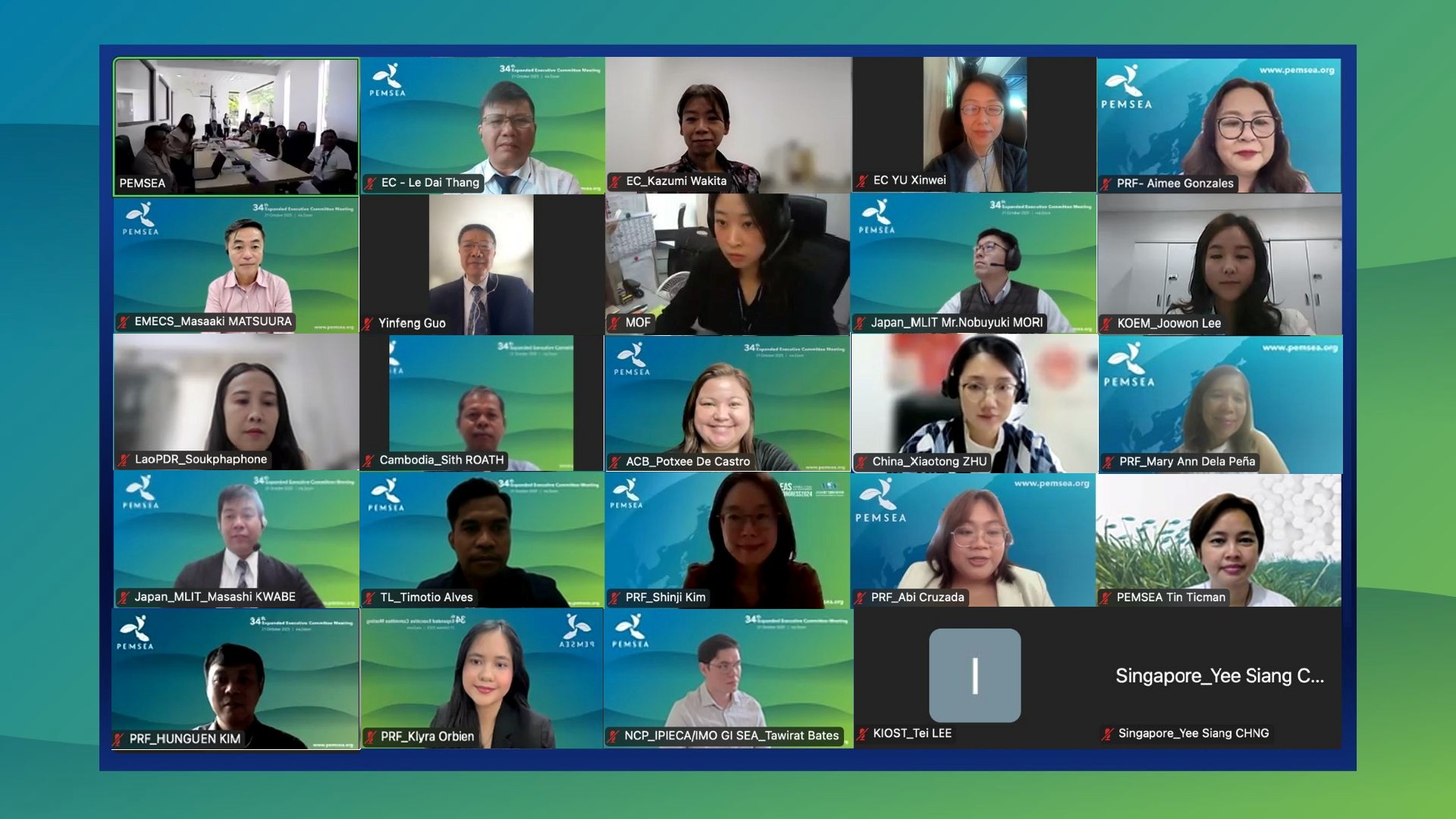East Asian Seas Region Pursues Evidence-Based Approach to Blue Economy
Thursday, 11 May 2017

Countries in the East Asian Seas (EAS) region continue to take essential steps to assess their respective ocean economies and ocean health.
“Sustainable blue economy growth is central to the health of both coastal ecosystems and local economies in the region. The ongoing work of countries to better understand what drives ‘blue economy’ and how we account for it is critical”, said PEMSEA’s Executive Director, Stephen Adrian Ross.
The EAS region is home to 30% of the world’s mangroves and a third of the world’s coral reefs, and is known as the center of marine biodiversity globally. Countries of the EAS region account for 80% of global aquaculture and more than 65% of harvesting and processing of the world’s capture fisheries. At the same time, the region’s seas also serve as an important conduit for 90% of world trade through shipping.
In 2012, ministers from ten EAS region countries signed the Changwon Declaration towards an Ocean-Based Blue Economy. The declaration is the region's response and commitment to achieve a blue economy in the context of sustainable development of coasts and oceans. The challenge, however, is to systematically measure blue economy growth in a region where there not only is a wide disparity in social and economic development (from least developed to fully developed), but also in the means to protect and conserve the coastal and ocean resources on which these countries rely.
“There is a need to have a clear definition and scope of the components of blue economy,” according to an article authored by Maria Corazon Ebarvia last year in the Journal of Ocean and Coastal Economics. “Ecosystem and environmental data are available from various studies, but the environmental and natural resource accounts within and across countries still need to be developed in a systematic way.”
A common framework for the assessment of the ocean economy and valuation of coastal and ocean ecosystems was adopted by the countries in the EAS region. Initial assessment of the ocean economy was conducted in China, Indonesia, Japan, the Philippines and South Korea, using data from the National Accounts. However, the environmental accounts still must be developed, especially for the coasts and oceans.
Assessment of ocean economy-environment may be better served with the UN Statistical Commission’s System of Environmental and Economic Accounting (SEEA), which was approved in 2012. The SEEA provides a framework for integrating ecosystems and environment in national income accounts. By accounting for natural assets, more accurate information can be provided to policymakers, planners and various stakeholders about development priorities and investments, and where resource conservation and environmental protection measures are most needed.
But considering that SEEA is relatively new, not all the countries in the EAS Region have SEEA systems and integrated economic and environmental accounts. Adopting the system will require countries to commit time and resources for its development.
Other valuation frameworks exist, such as The Economics of Ecosystems and Biodiversity (TEEB) and the Wealth Accounting and Valuation of Ecosystem Services (WAVES). An ASEAN TEEB Scoping Study showed that under a “business as usual” scenario, Southeast Asia is expected to lose one third of its mangroves between 2000 and 2050, with the cost of loss estimated at US$2 billion. For coral reefs, the value of lost reef-related fisheries is US$5.6 billion, with the highest loss in Indonesia and the Philippines.
Through valuation and proper accounting, governments can recognize and comprehend that preserving ecosystems makes more economic sense than sacrificing them for short-term gains.
“Until recently, arguments in support of the conservation of species and habitat were based primarily on issues such as evolutionary uniqueness, rarity or threat of extinction,” writes Ebarvia. “Today, these arguments also point out that maintaining biodiversity and ecosystems directly benefits people by contributing to food, water and energy security, income, livelihood and quality of life.”
Ongoing initiatives to assess the ocean economy and ocean health are promising. In line with this, countries are determining if: a) data are available and from which government agencies or organizations; b) the data sufficiently cover the scope of the ocean economy-environment accounts; c) the estimation methodology and parameters are appropriate; and d) the proposed framework is suitable in the settings of the EAS countries.
PEMSEA research recommends developing a system for ocean economy-environment accounting, and mainstreaming the valuation of ecosystems services and environmental impacts, including climate change. This will allow the EAS countries to manage natural resources, protect the environment, identify sustainable investment opportunities and move towards a blue economy.
Since 2016, work has been underway to develop a set of National State of Oceans and Coasts (SOC) reports, including National Inception Workshops held in nine countries: Cambodia, China, Indonesia, Malaysia, the Philippines, RO Korea, Thailand, Timor Leste and Viet Nam. Draft National SOCs will be presented at a Blue Economy Conference planned for late 2017, with the completed reports disseminated at the next East Asian Seas Congress in 2018.
Read the full article from the Journal of Ocean and Coastal Economics here.



